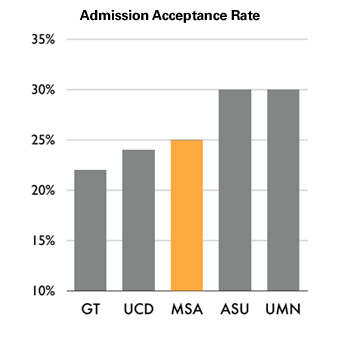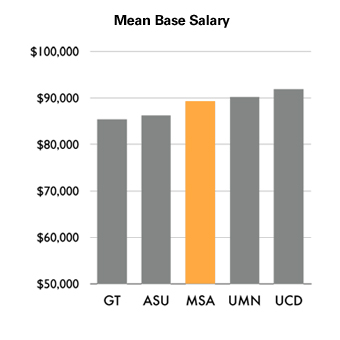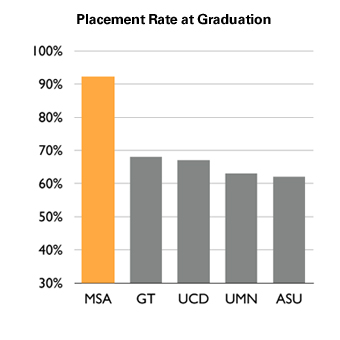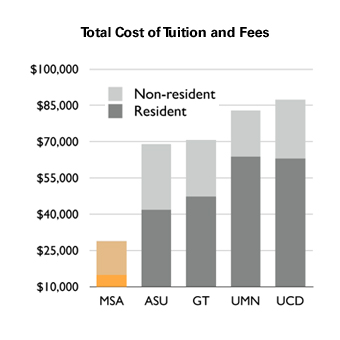The Master of Science in Analytics (MSA) is not designed to emulate the MBA education. However, data collected as part of the national ranking of MBA programs offer an opportunity to compare MSA student outcomes relative to the widely taught graduate degree in business. Using data from the annual ranking of business schools by U.S. News and World Report, an assessment was conducted to determine where in the ranking the MSA might land based on three criteria: the admissions acceptance rate, base starting salaries, and placement rate by graduation. The cost of both resident and non-resident tuition (which covers 2 years for the MBA), is also compared.
As the basis for comparison, the four highest-ranked MBA programs at public universities with relatively small cohort sizes (under 80 students) were selected. The universities (and their ranks, in order) are: the University of Minnesota–Twin Cities (#21), Arizona State University (#27), Georgia Tech (#28), and the University of California–Davis (#28). According to the US News ranking the four schools are considered the best programs that, like NC State University, are public institutions, and have student cohort sizes not much larger than the MSA program. Data provided are for the Class of 2010.
The comparison shows the MSA falling in the same range in terms of two criteria: the competitiveness of admission and average base starting salaries. (The MSA salary average is for candidates with prior job experience, which would be the norm for MBA candidates. About 70-percent of the MSA cohort has work experience.) MSA job placement by graduation (92-percent) performs much better than the MBA programs, which fall in the range of 60- to 70-percent.
The MSA is not a MBA degree. However, the data suggest that MSA student outcomes are at least as good, if not better, than comparable top-ranked MBA programs that cost 2- to 3-times more in tuition and take twice as long to complete.




